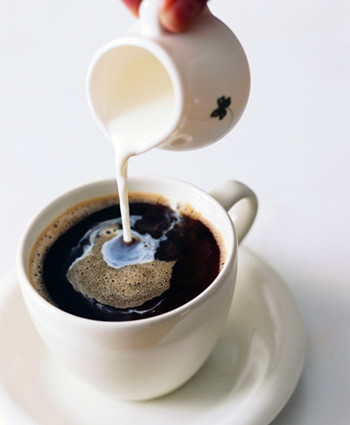The origin of high-quality coffee beans Brazil is the most important coffee producer in the world.

* Brazil
Brazil is the most important coffee producing area in the world, accounting for 1/3 of the total output in the world. Brazil has 10 states producing coffee beans. Due to geographical and climatic differences, the quality is inevitably mixed. Therefore, Brazilian coffee beans are divided into NO according to grades. 1~NO. 3, Screen 18, Screen 19, in order to achieve neat and stable quality, processing baking can also have a better effect. Brazilian coffee aroma, acid, alcohol are moderate, bitter light, known for smooth taste. Among the various Brazilian coffee varieties, Santos Coffee is more famous. Santos Coffee is also called Bourbon Santos. Bourbon Santos is of good quality, round in the mouth, with a moderate acidity and a strong sweetness. Bourbon Santos is considered an essential ingredient in blended coffee.
* blue Mountain
Blue Mountain coffee is produced in the Blue Mountains in western Jamaica, hence its name. Blue Mountain is a mountain range with an altitude of 2256 meters. Coffee trees are planted on steep slopes at an altitude of about 1000 meters. The annual production of Blue Mountain coffee is only about 700 tons. Blue Mountain coffee beans are plump in shape and slightly larger than ordinary beans. Acid, aroma, alcohol, sweet taste uniform and intense, slightly bitter taste, taste harmony, excellent flavor, suitable for single coffee. Due to the low yield, most of the coffee sold on the market is "special blue mountain", which is a comprehensive coffee mixed with other coffee beans at the bottom of blue mountain.
* Colombia
Colombia is the second largest coffee producer in the world, producing 12% of the world's total, after Brazil, and the first among countries producing "Colombian Mild." Colombia coffee trees are planted in the upland, cultivation area is not large, in order to facilitate the care of harvest. After harvest, coffee beans are treated with water washing (wet method). Colombia coffee beans are neat in quality and can be called the standard beans in coffee beans. Colombia coffee beans are large in shape, light green in color, with a special heavy flavor, and are widely favored for their rich and unique aroma. The taste is sour with sweet, low bitterness, with different baking degree, can lead to multi-level flavor. Medium baking brings out the sweetness of the beans with a mellow acidity and bitterness; deep baking increases the bitterness, but the sweetness still doesn't go away much. Generally speaking, a moderately deep roast will give the taste more personality, not only as a single drink, but also suitable for mixed coffee.
* Mandheling
Indonesia is a big coffee producer. Coffee is mainly grown in Java, Sumatra and Sulawesi, with the ROBUSTA species accounting for 90% of total production. Mantenin is one of the few ARABICA species. Mantenin has large particles, hard beans, high rate of defects in the planting process, usually manual selection after harvest, if the control process is not strict enough, it is easy to cause uneven quality, and different baking degrees also directly affect the taste, so it has become a controversial single product. Before Blue Mountain was discovered, Mantenin was regarded as the best coffee because of its rich and mellow taste, not astringent and sour, alcohol and bitterness can be fully revealed; moderate roasting will leave a moderate sour taste, unique flavor; if roasted too shallow, there will be pink taste and astringency.
* Kona
Hawaiian coffee beans are grown on volcanic terrain. At the same time, there is a high density of artificial cultivation agronomy, so each bean can be said to be spoiled, the price is naturally not cheap, the price is second only to Blue Mountain. Hawaiian kona beans are evenly shaped and have intense acidity and sweetness. The taste is moist and smooth. Moderate baking makes the beans sour, and deep baking makes both bitter and mellow. The beans grow from sea level to 6000 feet. Gourmet coffee is grown only in mountainous areas, at heights of about 4000- 6000 feet and requires annual rainfall of about 80 feet and is very visible in dry and wet seasons. Gourmet coffee beans are grown on very fertile soil, usually volcanic, and light clouds or cloudy weather are necessary for high-quality coffee beans. Daytime temperatures need to be 15-20 degrees Celsius. This climate results in a longer growing process, unique growing and climatic conditions resulting in a stronger coffee flavor.
Important coffee producing countries include:
Brazil * Mexico *Java
:: Colombia :: Kenya *Sulawesi
Costa Rica Ethiopia :: Papua New Guinea
:: Guatemala * Yemen *Samatra
Important Notice :
前街咖啡 FrontStreet Coffee has moved to new addredd:
FrontStreet Coffee Address: 315,Donghua East Road,GuangZhou
Tel:020 38364473
- Prev

How to judge the quality of beans from their appearance? Judgment of appearance
How to judge the quality of beans from their appearance? From its color-whether glossy, uniform color without spots; smell its fragrance-whether fragrance is rich; oral brittleness-- put into the mouth to bite, whether crisp sound, good taste, and finally to see if the bean shape is full and has weight. Because you can't make mellow coffee without good coffee beans / powder. Secondly, we should pay attention to coffee beans.
- Next

Coffee trees are mainly divided into two kinds of Arabica Robusta coffee beans.
In terms of varieties, coffee trees are mainly divided into two types: one is Arabica, and the other is Robusta Arabica Robusta, which is mainly produced in tropical Central and South America and on the island of Madagascar in west and central Africa. Indonesia in Asia is planted on alpine slopes at an altitude of 9002000 meters above sea level and on alpine slopes at an altitude of 200600 meters above sea level.
Related
- Guji coffee producing area of Guji, Ethiopia: Humbela, Shakiso, Wulaga
- What is the most expensive variety of Qiloso in BOP multi-variety group?
- How to store the coffee beans bought home?
- Why are Yemeni coffee beans so rare now?
- Ethiopian Sidamo all Red Fruit Sun Sun Santa Vini Coffee beans
- SOE is mostly sour? What does it mean? Is it a single bean? what's the difference between it and Italian blending?
- Is Italian coffee beans suitable for making hand-brewed coffee?
- How to choose coffee beans when making cold coffee? What kind of coffee beans are suitable for making cold coffee?
- Just entered the pit to make coffee, what kind of coffee beans should be chosen?
- Can only Japan buy real Blue Mountain Coffee? What are authentic Jamaican Blue Mountain coffee beans?

